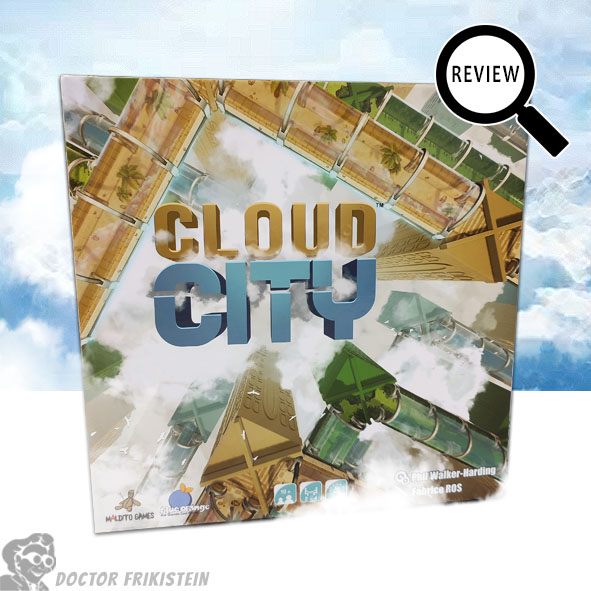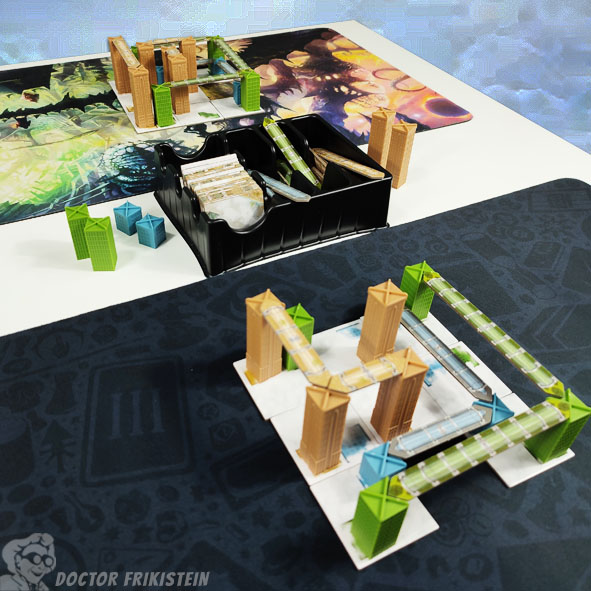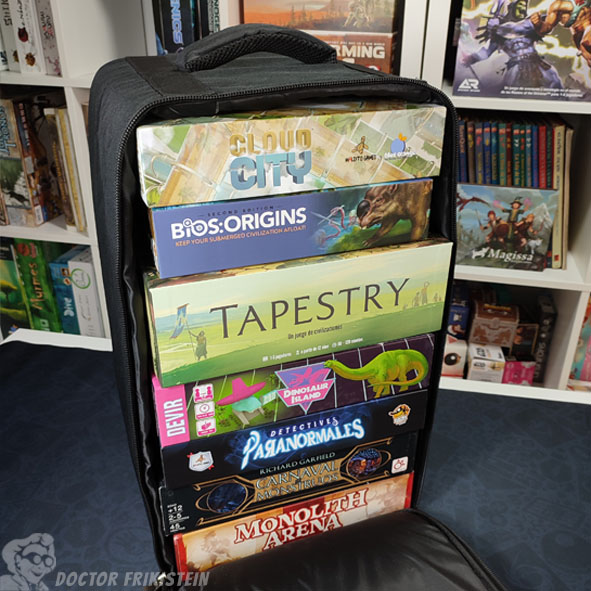In this post you can find the review of the Cloud City board game by Cristian Becerra

INTRODUCTION
Human beings have the capacity to dominate the land, the sea and the airspace. Thanks to the technological advances that he himself creates, he can adapt to any circumstance that surprises him, whether it takes more or less time to react. Can you imagine living in buildings so tall that they pierce the clouds? Think of a world so populated that no more can be built on the surface of the earth. Would it be possible to make cities there, in the clouds?
Cloud City makes this breakthrough a reality. It is a game that uses tiles as the main element to play, like the well-known Carcassonne and other titles such as Tang Garden, The Downfall of Pompeii, Isle of Skye, Horus… You will place cloud tiles in your game area, which we will call city. Cloud tiles have markings indicating which buildings you should put on them. The buildings are of three types: small (blue), medium (green), tall (brown). What the game is about is trying to join the buildings of the same type that you put in your city using the walkways. Each type of building has its own walkways. In addition, they have different lengths: the longer a walkway is, the more points it provides at the end of the game. In summary, the idea is to try to put buildings of the same type as far away as possible from each other to try to connect them with long walkways, which are the ones that give the most points.

HOW TO PLAY
You start the game with one initial cloud slab in your city and three more in your hand. Your turn is made up of four phases.
First phase: Expand your City base
Take a cloud tile from your hand and place it, oriented however you want, in your city. The cloud tile you place must be adjacent to at least one other tile (not diagonally). Your city has an area of 3X3. You cannot place cloud tiles outside of this area.
Second phase: Place buildings
As mentioned above, cloud tiles have markings indicating where you should place the corresponding buildings. In this phase you only have to do this.
Third phase: Build Walkways
In this phase you join the buildings that you want and can using the walkways. Some rules that should be taken into account and that I think are necessary to mention in this review are the following:
- A building can accommodate a maximum of two walkways, even if it has four spaces to accommodate up to four.
- A walkway can never pass over a space in your city that does not already have a cloud tile placed. That is, if a walkway passes over an empty space in your city, you cannot put it up.
- On your turn you can put as many walkways as you want, even those that for X reasons you have not wanted or been able to put in previous turns.
- Walkways can never be placed diagonally. They always go in a straight line.
- You cannot join two buildings of different types with a walkway, that is: blue ones join blue ones, green ones with green ones and brown ones with brown ones. Additionally, each type of building has its own walkways, so to join two brown buildings, for example, you must use the brown walkways. You also have to keep in mind that there are walkways of different lengths for each type of building. The longer the ones you use, the better, since they give you more points at the end of the game. Therefore, it is important to place buildings of the same type as far away as possible from each other to use long walkways.
- Two walkways of the same type cannot cross each other, since they would be at the same height and would collide.
Fourth phase: Draw a cloud tile
During game preparation each player receives a hand of three cloud tiles. The rest is formed into a face-down draw pile. From this pile, three cloud tiles are left face up next to it. In this phase you have the option of taking one of the three face-up cloud tiles, replacing it with another one from the pile, or taking the first one from the pile, going blindly.
After eight rounds of play, the game ends. In your city you should have nine cloud tiles forming a 3X3 square. To determine your score, all you have to do is add up the points that all the walkways that you have placed between the buildings in your city give you.

CONCLUSIONS
The strong point of Cloud City is that it is as a good family game. It is easy to learn and its rules are relatively simple. Without going any further, in ten minutes at most you can play. On the other hand, aesthetically it looks very cool once the game is over and you see how your city looks with the buildings linked by the different colored walkways. It also has a touch of manual dexterity when it comes to placing the walkways in places that are inaccessible to the human hand. This goes for those players who like, at least a little, games of skill. Despite being little known, Cloud City can be a good candidate as an introductory game to modern board games. Would you like to give it a try?

Doctor Frikistein® reviews are made without any sponsorship and with games purchased for our property.


